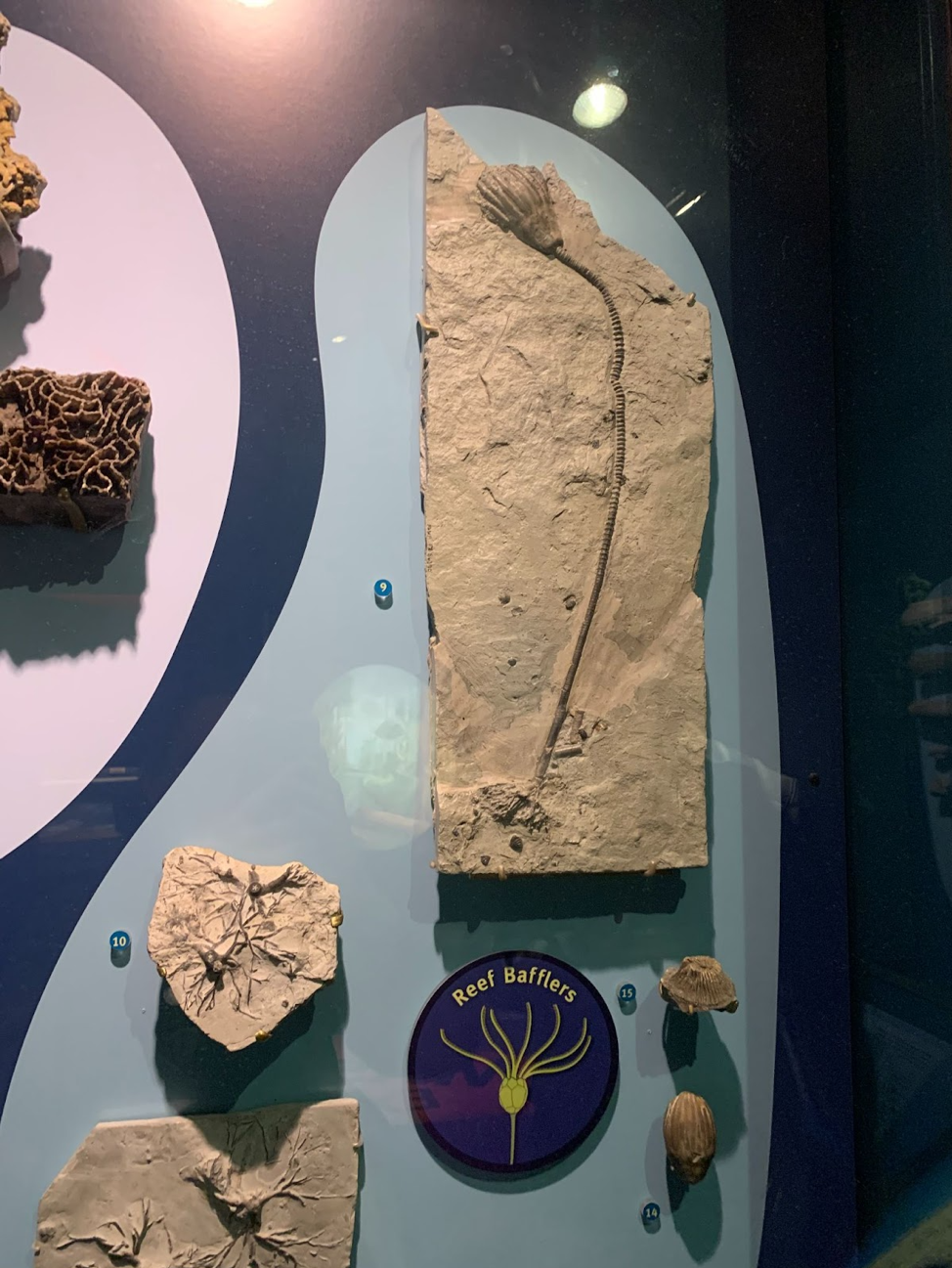Crinoids, Fossils, and Other Indiana Dunes Treasures
/Imagine you’re at one of the many beaches along Lake Michigan. As you walk along the shore, listening to the waves and feeling the sand beneath your feet, you look down and something catches your eye: a tiny rock that looks like a Cheerio! Upon further inspection you realize that it’s not breakfast cereal. It’s a fossil from an animal that lived about 450 million years ago!
Pycnocrinus multibrachiatus is a crinoid (sea lily) that lived during the Ordovician Period. During this time, Indiana sat under a shallow sea near the equator. Crinoids, along with other organisms, flourished in the warm tropical waters. Over time as the Earth changed, these animals died and were fossilized. Today, crinoid fossils are one of my favorite fossils to find on the shores of Lake Michigan.
So, what is a crinoid exactly? Well, they’re related to modern day echinoderms which include sea lilies, sea stars, sea urchins, and brittle stars. If you want to get very specific about things, they’re part of the class Crinoidea.
The basic structure of a crinoid can be broken up into two sections: the crown and the stalk. At the top, the crown is made up of the aboral cup, the arms attached to the cup, and the pinnules that make up the arms. The stalk is made up of the holdfast that allows the crinoid to attach itself to a structure, and the stem. The stem typically consisted of disc-like plates (columnals) stacked on top of each other. The part of a crinoid that you find on the beach is most commonly the columnals, which can sometimes look like a Cheerio.
Besides crinoid fossils, you can find other treasures along the beach. There are many types of fossilized corals and brachiopods. If you’re more of a shell enthusiast, there is an abundance of zebra mussel shells along the shore. Hag stones, which are stones with naturally occurring holes, are also a common sight – according to folklore, they have protective and healing powers. With all the industry around the Indiana Dunes, you can also find slag, which looks black and shiny and is a product of steel production and smelting. Beach glass smoothed out by lake waves can also be found along the beach, and is the one thing you can take home from the National Park since it’s considered trash. (The Indiana Dunes National Park allows you to take beach glass, but the State Park does NOT.)
The first time I found a crinoid, I was at West Beach during our summer camp program. At first I thought it was a button because it was so big! Ever since, I’ve enjoyed finding fossils at the beaches along Lake Michigan. Something about finding one and thinking about how long ago it lived puts everything into perspective. It’s also a lot of fun when a student finds one and I get to tell them all about crinoids and the unique geological history of the Indiana Dunes.
PLEASE NOTE: Taking fossils from the Indiana Dunes National and State Parks is not allowed.
Sierra Conley
Environmental Education Fellow










